Rainbow Springs State Park, Part 4 of 7
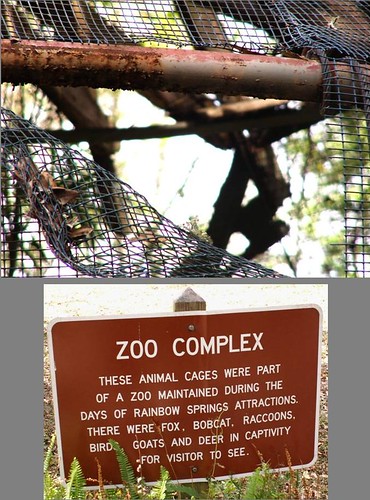
On March 13, 2006, Mary and I visited the Rainbow Springs State Park, which features the headsprings of the Rainbow River. The park's 1,595 acres contain at least 11 distinct, natural communities: mesic flatwoods, sandhills, scrubby flatwoods, sinkholes, upland mixed forests, basin swamps, depression marshes, floodplain swamps, and hydric hammocks.
This is a first magnitude spring complex, fed by four main vents. Its average flow is 465 million gallons per day. These waters run to the Withlacoochie River, through Lake Rousseau, and finally into the Gulf of Mexico.
Rainbow Springs had begun serving as a tourist attraction in the 1920s and received its current name in the 1930s. "As the attraction grew," says the brochure, "the river was dredged for glass bottom boat tours, and waterfalls were built on piles of phosphate tailings. A zoo, rodeo, gift shops, and a monorail with leaf-shaped gondolas were also added."
The old zoo cages have been left in place. They are now overgrown and in disrepair but possess their own beauty and history....
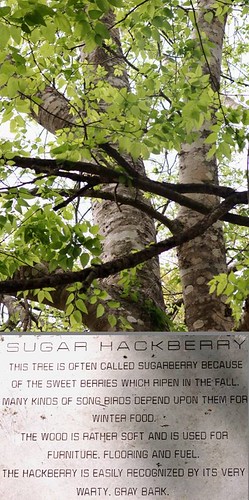
Human cultures have inhabited the area surrounding the park for at least 10,000 years. Says the brochure, "People we now call the Timucua lived here at the time of European contact....Pioneers first settled the headsprings in 1839. The settlement was known by several names -- lastly, Juliette. By 1883, about 75 people lived in this agricultural community, which had a railroad station, sawmill, hotel, stores, and a post office. The hard freezes of the mid-1890s destroyed the town's important citrus industry, so the people migrated downriver to the new phosphate mining community of Dunnellon."
Rainbow Springs closed in the 1970s due to competition from the larger theme parks, but reopened as a state park in the early 1990s.
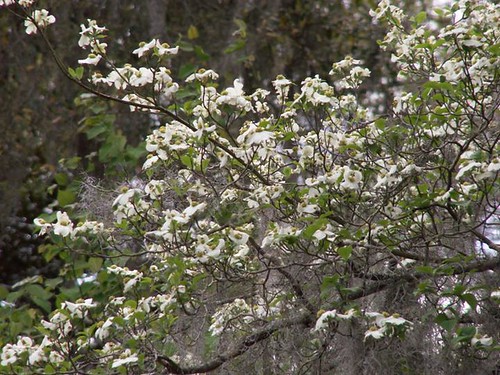
The glass-bottom boats are gone, replaced by canoes and kayaks. The rodeo and monorails are gone and empty, broken cages are all that's left of the zoo. But there is still a gift shop (we walked away with a T-shirt, mug, postcards, and some books), and a lovely outdoor dining pavilion. From the pavilion I spotted this dogwood, draped with Spanish moss.
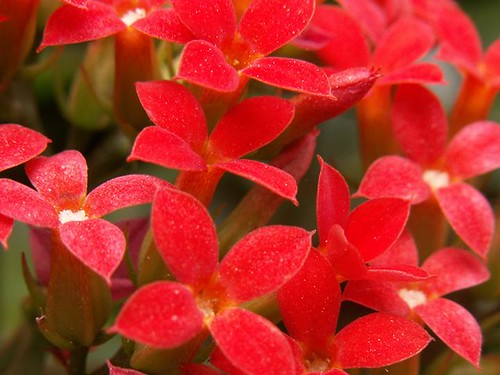
Large beds of these flowers sit outside the Visitor's Center...
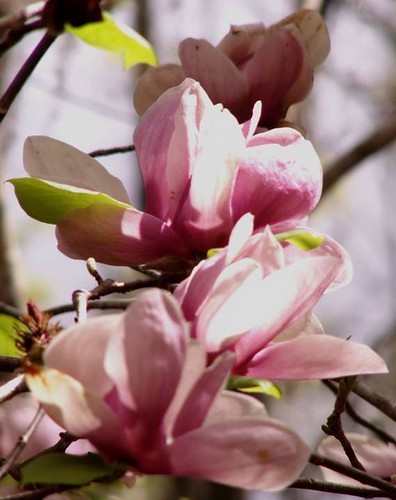
... not far from magnolia blossoms.
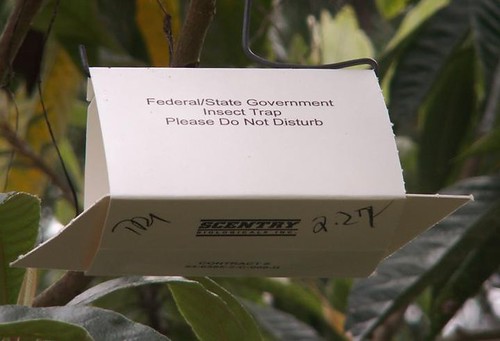
I saw this trap hanging in a loquat tree beside the trail, but don't know whom its intended guests are.
The park's humanmade falls are still there -- but the next entry will turn to its natural waters.











0 Comments:
Post a Comment
<< Home